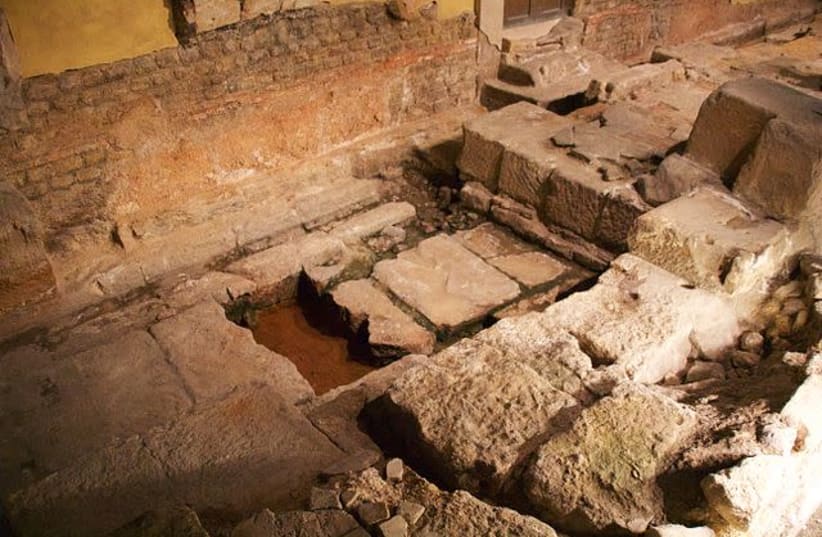The findings could provide important information into the burial practices in the area around 2,000 years ago, said the council.
The coffin, which was buried facing north – suggesting a pagan burial, contained one body in a prone position with partial remains of another person at the feet of the prone remains.
A small pot with the remains of food in it and small, colored glass beads were found near the grave, in what could be a votive offering, according to the council.
The site of the burial was discovered after a Roman wall was unearthed in Sydney Bath gardens following building conservation and landscape work. The coffin was discovered as the area around the wall was excavated.
“This is a real career highlight, it isn’t often that you come across an in-situ stone coffin complete with occupants," said Kelly Madigan, a partner in L-P Archaeology, the company excavating the area.
"I’m beyond excited to find out the results of the assessment which is currently ongoing in our labs.
"Having a human skeleton directly associated with a coffin is a rarity and to have this one associated with a probable votive offering and nearby human cremation, allows a very rare glimpse into funerary practices in the region almost two millennia ago.”
The Justice Ministry granted the project team a license to handle the human remains. It stipulates that the remains will be buried in a certified burial ground by 2026.
